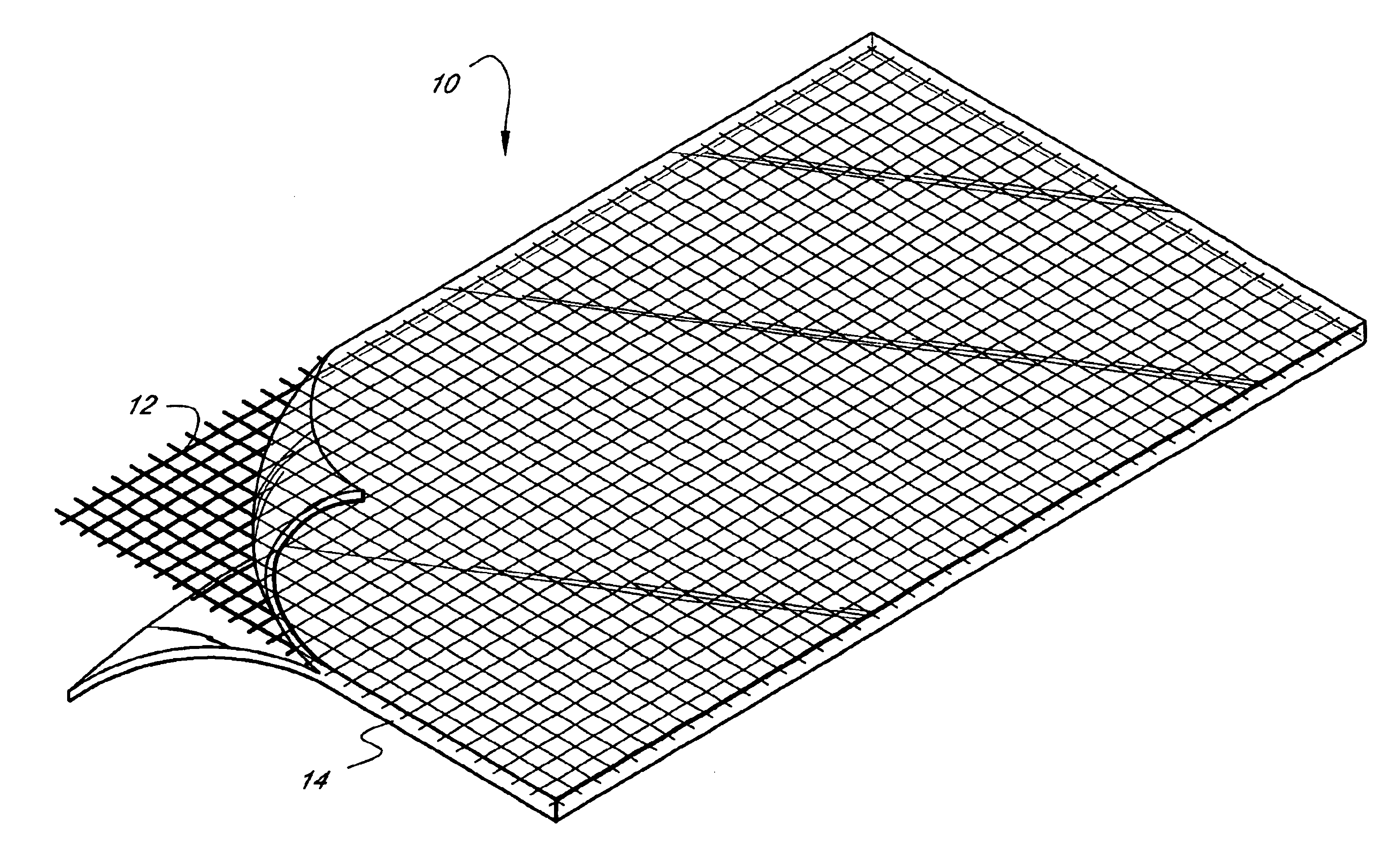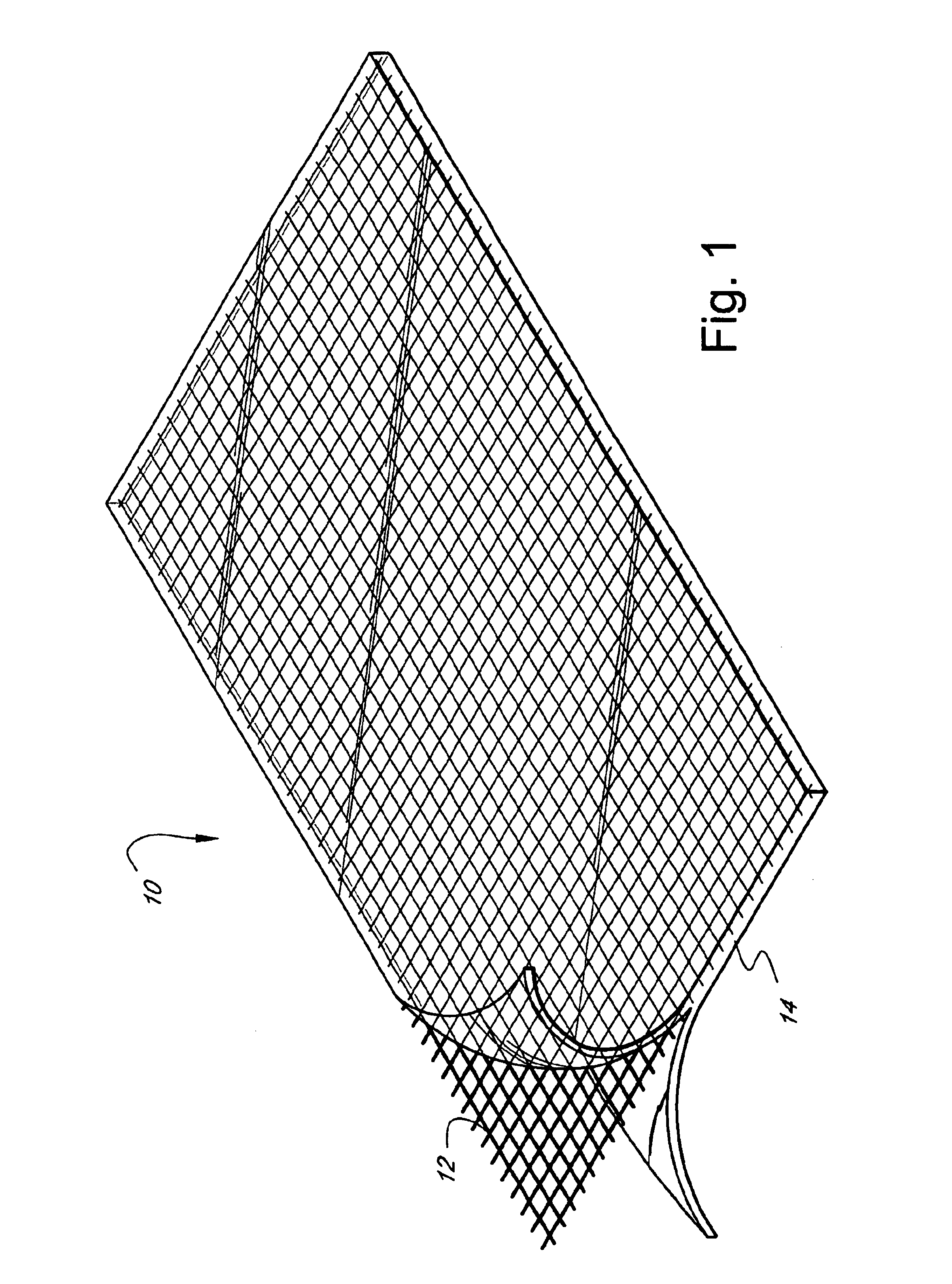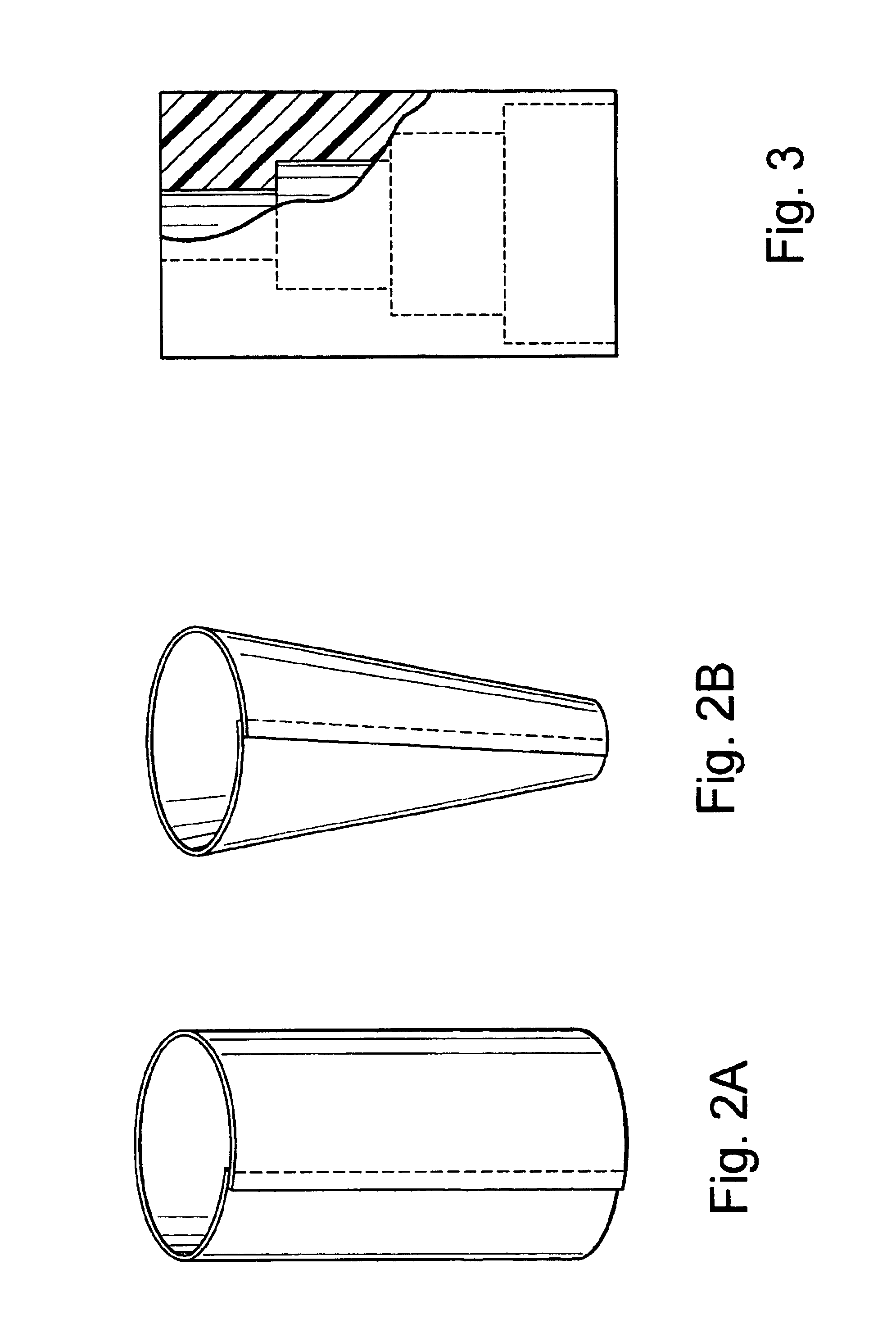Self-supporting, shaped, three-dimensional biopolymeric materials and methods
a biopolymer material and self-supporting technology, applied in the field of self-supporting, shaped, three-dimensional crosslinked proteinaceous biopolymer materials, can solve the problems of inability to allow in situ reaction and repair by conventional biocompatible, large wounds, and/or perforations
- Summary
- Abstract
- Description
- Claims
- Application Information
AI Technical Summary
Benefits of technology
Problems solved by technology
Method used
Image
Examples
example 1
[0034]A rectangular glass plate having a flat, non-stick casting surface was used for casting sheets of biomaterial. The top of the glass plate was open and included a sliding bar as a doctor blade supported on a pair of laterally spaced-apart parallel guides having a thickness of about 0.4 mm. A large aliquot of liquid BioGlue® proteinaceous material (CryoLife, Inc., Kennesaw, Ga.) was deposited onto the casting surface near the doctor blade. The doctor blade was moved along the guides so as to spread the liquid mixture evenly along the casting surface. Upon curing, the resulting sheet of biomaterial had a substantially uniform thickness of about 0.4 mm.
example 2
[0035]A generally circular pool (approx. 3 inches in diameter) of liquid BioGlue® proteinaceous material was dispensed onto a surface of a plastic sheet. A piece of fiberglass fabric was then placed on the pool while the material was still liquid, followed by a second layer of plastic sheet. This sandwich structure was then compressed by the weight of a book. After curing, the resulting reinforced biomaterial sheet was easily peeled form the plastic forming sheets and was placed in water to prevent dehydration. The reinforced biomaterial film was observed to be extremely strong, while maintaining a great deal of flexibility and memory.
example 3
[0036]Example 2 was repeated using Vicryl™ (Ethicon) knitted polyester mesh. Similar results were achieved as with Example 1. The material of this Example 2, however, was somewhat more flexible, probably owing to the relatively soft nature of the woven mesh that was employed as the reinforcing medium. This material was pressure tested and was shown to withstand>700 mm Hg.
PUM
| Property | Measurement | Unit |
|---|---|---|
| Length | aaaaa | aaaaa |
| Length | aaaaa | aaaaa |
| Molar density | aaaaa | aaaaa |
Abstract
Description
Claims
Application Information
 Login to View More
Login to View More - R&D
- Intellectual Property
- Life Sciences
- Materials
- Tech Scout
- Unparalleled Data Quality
- Higher Quality Content
- 60% Fewer Hallucinations
Browse by: Latest US Patents, China's latest patents, Technical Efficacy Thesaurus, Application Domain, Technology Topic, Popular Technical Reports.
© 2025 PatSnap. All rights reserved.Legal|Privacy policy|Modern Slavery Act Transparency Statement|Sitemap|About US| Contact US: help@patsnap.com



